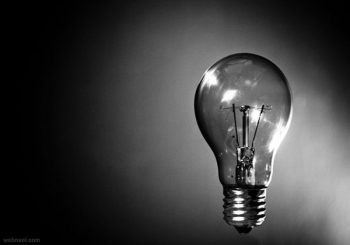Staff Writer for Wake Up World
With approximately 14% of people lacking electricity worldwide, creative and affordable power solutions are needed. Dr. Aaswath Raman, Assistant Professor at the University of California, Los Angeles, has developed a device that uses radiative cooling to generate power. This solution could be used in places without electricity for low-power needs such as charging phones. (1, 2)
[pro_ad_display_adzone id=”110028″]
Inspiration in Sierra Leone
Raman found his inspiration while driving through a remote village in Sierra Leone. It didn’t have electricity and was so dark that Raman didn’t know he was in a village until he heard voices from those who lived there. He then began conceiving a device that could generate power during the night when solar panels can’t harness energy from the sun. (2)
Creating Light from Darkness
After returning home, Raman created the very device he conceived of. He created something that uses radiative cooling to generate power. Radiative cooling occurs when objects on Earth lose enough heat that they are cooler than the surrounding air. This happens at night if there aren’t any clouds to keep warmth from escaping. One common example is when grass is frosted on autumn mornings when the air temperature is just above freezing. (2)
Dr. Raman’s prototype is made of a polystyrene disc painted black and covered by a windshield. The device releases heat unevenly causing the side facing skyward to cool faster than the other side. A thermoelectric generator uses the heat difference between the two sides of the device to generate a flow of electricity. (2)
Ellen D. Williams, physics professor at the University of Maryland and former director of the Department of Energy’s Advanced Research Projects Agency-Energy, believes that Dr. Raman’s device could be incredibly useful. “This is a neat combination of radiative cooling — a technique where Raman has pioneered real working devices — with thermoelectric materials that generate electricity if one side is hotter than the other side. Both technologies are proven and practical, but I haven’t seen them combined like this. They did this with inexpensive materials, suggesting it could be made into useful products for the developing world,” Williams told The New York Times. (2)
A Work in Progress
At this point, Raman’s prototype doesn’t produce much power. It generates about 25 milliwatts per square meter when combined with a voltage converter. This is three orders of magnitude lower than what is produced by most solar panels. (2)
However, this type of device can still be useful, especially in places that don’t have electricity. Solar cells don’t work after the sun has set, which is when people often need power the most. So any solution for power at night would be helpful, even for just the low-power needs. (2)
Additionally, Dr. Raman’s prototype is extremely low-cost. This feature would make it more accessible to developing parts of the world. Raman believes that it could be combined with solar-powered lights to bring power to areas lacking electricity. (2)
“I figured the amount of electricity we could get would be pretty small, and it was,” Raman told The New York Times. “But walking around in Sierra Leone, I realized lighting remains a big problem, so it’s an opportunity as well.” (2)
Article sources:
- [1] https://www.iea.org/energyaccess/database/
- [2] https://www.nytimes.com/2019/09/12/science/solar-energy-power-electricity.html
About the author:
Amelia Harris is a writer and eco-activist, interested in health and all things esoteric, with a passion for sharing good news and inspiring stories. She is a staff writer for Wake Up World.
[pro_ad_display_adzone id=”110027″]







